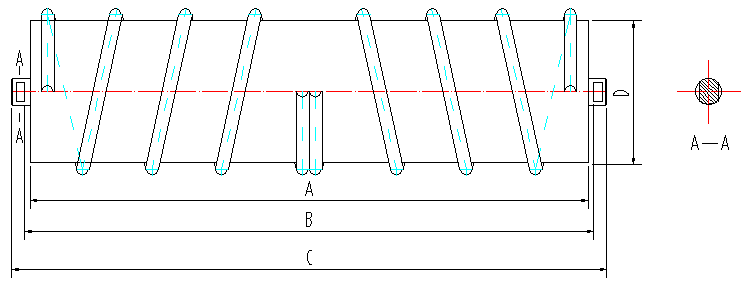 Afrikaans
Afrikaans  Albanian
Albanian  Amharic
Amharic  Arabic
Arabic  Armenian
Armenian  Azerbaijani
Azerbaijani  Basque
Basque  Belarusian
Belarusian  Bengali
Bengali  Bosnian
Bosnian  Bulgarian
Bulgarian  Catalan
Catalan  Cebuano
Cebuano  Corsican
Corsican  Croatian
Croatian  Czech
Czech  Danish
Danish  Dutch
Dutch  English
English  Esperanto
Esperanto  Estonian
Estonian  Finnish
Finnish  French
French  Frisian
Frisian  Galician
Galician  Georgian
Georgian  German
German  Greek
Greek  Gujarati
Gujarati  Haitian Creole
Haitian Creole  hausa
hausa  hawaiian
hawaiian  Hebrew
Hebrew  Hindi
Hindi  Miao
Miao  Hungarian
Hungarian  Icelandic
Icelandic  igbo
igbo  Indonesian
Indonesian  irish
irish  Italian
Italian  Japanese
Japanese  Javanese
Javanese  Kannada
Kannada  kazakh
kazakh  Khmer
Khmer  Rwandese
Rwandese  Korean
Korean  Kurdish
Kurdish  Kyrgyz
Kyrgyz  Lao
Lao  Latin
Latin  Latvian
Latvian  Lithuanian
Lithuanian  Luxembourgish
Luxembourgish  Macedonian
Macedonian  Malgashi
Malgashi  Malay
Malay  Malayalam
Malayalam  Maltese
Maltese  Maori
Maori  Marathi
Marathi  Mongolian
Mongolian  Myanmar
Myanmar  Nepali
Nepali  Norwegian
Norwegian  Norwegian
Norwegian  Occitan
Occitan  Pashto
Pashto  Persian
Persian  Polish
Polish  Portuguese
Portuguese  Punjabi
Punjabi  Romanian
Romanian  Russian
Russian  Samoan
Samoan  Scottish Gaelic
Scottish Gaelic  Serbian
Serbian  Sesotho
Sesotho  Shona
Shona  Sindhi
Sindhi  Sinhala
Sinhala  Slovak
Slovak  Slovenian
Slovenian  Somali
Somali  Spanish
Spanish  Sundanese
Sundanese  Swahili
Swahili  Swedish
Swedish  Tagalog
Tagalog  Tajik
Tajik  Tamil
Tamil  Tatar
Tatar  Telugu
Telugu  Thai
Thai  Turkish
Turkish  Turkmen
Turkmen  Ukrainian
Ukrainian  Urdu
Urdu  Uighur
Uighur  Uzbek
Uzbek  Vietnamese
Vietnamese  Welsh
Welsh  Bantu
Bantu  Yiddish
Yiddish  Yoruba
Yoruba  Zulu
Zulu Essential Components of Conveyor Systems for Efficient Material Handling
Understanding Conveyor Parts A Key to Efficient Material Handling
Conveyors are an indispensable component of various industrial processes, enabling the efficient movement of materials from one point to another. Whether in a manufacturing plant, warehouse, or distribution center, conveyors streamline operations, reduce labor costs, and improve safety. To truly grasp the significance of conveyor systems, it’s essential to understand their key components, commonly referred to as conveyor parts.
One of the primary elements of a conveyor system is the belt. Conveyor belts can be made from various materials, including rubber, fabric, and metal, each selected based on the type of material being transported and the operating environment. The belt serves as the surface on which goods are placed, and its design can vary significantly—some are flat, while others might be modular or cleated, catering to different types of loads.
Rollers are another critical component. These cylindrical elements, typically made of metal or plastic, support the conveyor belt and facilitate its movement. They are strategically placed along the length of the conveyor to reduce friction and wear, thus ensuring a smooth and efficient operation. The choice of rollers and their arrangement can influence the conveyor’s load capacity and overall performance.
Equally important are the pulleys. Located at either end of the conveyor, pulleys drive the belt and support its movement. The drive pulley, which is powered by a motor, provides the necessary force to move the belt, while the return pulley allows the belt to complete its cycle. Understanding the function of pulleys ensures that maintenance practices can be effectively applied to minimize downtime and enhance efficiency.
conveyor parts

Idlers are components that support the belt and carry the load while maintaining the belt’s alignment. These are essential for keeping the belt taut and ensuring it runs smoothly over the rollers and pulleys. Proper idler alignment is crucial for preventing misalignment and reducing wear on both the belt and the system.
Moreover, motors and drives are integral components of conveyor systems. They offer the necessary power to move the conveyor belt and can vary in size and strength, depending on the application. Electric motors are common, but hydraulic and pneumatic systems are sometimes used for specific environments or applications, providing flexibility in operation.
To maximize the efficiency of a conveyor system, controllers and sensors are often integrated. These electronic components allow for the automation of processes, enabling features such as speed control, start/stop functions, and load sensing. With advances in technology, modern conveyor systems can incorporate smart technologies, enabling real-time monitoring and predictive maintenance, which reduce operational costs.
Lastly, safety features are crucial in conveyor design. Emergency stop buttons, safety guards, and warning sensors are often installed to prevent accidents and protect workers. Understanding these safety elements is essential for any organization to create a safe working environment.
In conclusion, the intricate interplay of various conveyor parts—belts, rollers, pulleys, idlers, motors, and safety features—forms the backbone of efficient material handling systems. As industries continue to evolve, the importance of understanding these components becomes increasingly clear. By investing in quality conveyor parts and ensuring regular maintenance, businesses can optimize their operations, enhance productivity, and maintain a competitive edge in the market. Whether you are involved in manufacturing, logistics, or any sector relying on material transportation, taking the time to understand how conveyor parts function can lead to significant improvements in your operations.
-
Revolutionizing Conveyor Reliability with Advanced Rubber Lagging PulleysNewsJul.22,2025
-
Powering Precision and Durability with Expert Manufacturers of Conveyor ComponentsNewsJul.22,2025
-
Optimizing Conveyor Systems with Advanced Conveyor AccessoriesNewsJul.22,2025
-
Maximize Conveyor Efficiency with Quality Conveyor Idler PulleysNewsJul.22,2025
-
Future-Proof Your Conveyor System with High-Performance Polyurethane RollerNewsJul.22,2025
-
Driving Efficiency Forward with Quality Idlers and RollersNewsJul.22,2025





























